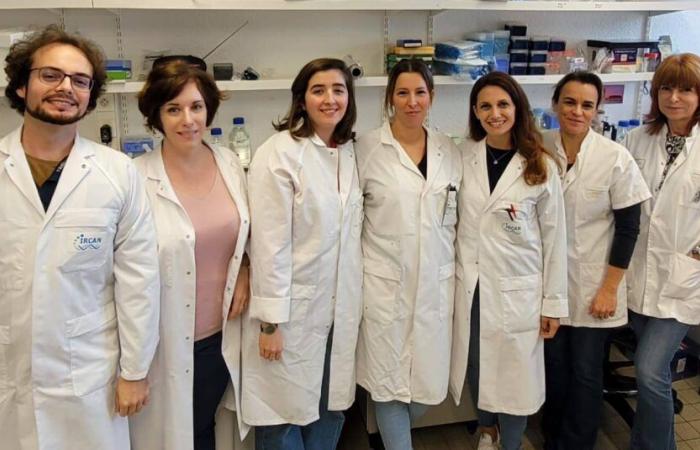
We hold our breath and cross our fingers. After elucidating a mechanism at play in certain patients suffering from Amyotrophic Lateral Sclerosis (ALS or Charcot disease) – a neuromuscular pathology characterized by the progressive death of motor neurons, the nerve cells which control, among other things, walking, speaking, swallowing and respiration, Professor Véronique Paquis and her team at the Institute for Research on Cancer and Aging (IRCAN), are preparing to launch a preclinical trial in mouse with a molecule whose effectiveness they have proven on cells derived from patients.
Flashback. Several years ago, this same team had revealed the existence, in patients suffering from a form of ALS, of dysfunction of the mitochondria, key structures of the cell, since they are responsible for its energy production and its survival.
“We also showed that this dysfunction was associated with mutations in a gene (called CHCHD10); they constitute a triggering factor for ALS, but also for another very similar serious illness, frontotemporal dementia, in certain patients. relates Professor Paquis.
It then remained to elucidate the molecular mechanisms which, based on the mutations discovered, induce the death of motor neurons. “To this end, we developed, on the one hand, a mouse model which reproduces the disease of people carrying CHCHD10 mutations, and on the other hand, cultured motor neurons from patients”continues the scientist.
By studying these cellular models, his team will discover that the mitochondrial cristae (inner membrane of the mitochondria), where the respiratory chain, responsible for energy production, is located, are abnormal in “mutated” patients. “We then postulated that a molecule capable of restoring the ridges could have therapeutic effectiveness.”
On the trail of an antibiotic
To verify this hypothesis, researchers will use high-throughput screening, an approach consisting of systematically testing a large number of molecules.
“Among the 1,600 repositionable drugs (1) tested, we identified one in particular capable of improving the structure of the cristae: nifuroxazide, a broad-spectrum antibiotic. By studying its effects on motor neurons in culture, differentiated from of patient stem cells, we have shown that it corrects the defects of these motor neurons, which die much less.”
A major result (published in the journal Brain), knowing that ALS is precisely due to the progressive death of these nerve cells which direct and control voluntary muscles.
Transport of mitochondria
A control in which mitochondria play a key role, as Professor Paquis explains. “Muscle control is carried out via the neuromuscular junction, which connects a neuron to a muscle. The transmission of information to this junction is done via an axon (extension of the body of the neuron). The mitochondria charged with energy must circulate along the axon to the junction and discharge the energy necessary for its function. This transport of mitochondria is therefore essential, and it uses very sophisticated mechanisms in which a protein called la is involved. syntaphilin, which plays a ”brake” role. This protein has already been identified as a therapeutic target in numerous neurodegenerative diseases: Alzheimer’s, Parkinson’s…”.
The Côte d’Azur team showed that the positive effects of nifuroxazide are linked to a degradation of syntaphilin, “inducing an improvement in mitochondrial transport and better energy delivery at the junction”.
The next step will be to test the effects of this drug on mice mimicking ALS in humans, an essential step before considering a clinical trial in patients.
1. The repositioning method is an increasingly used therapeutic strategy which involves testing drugs that already have marketing authorization.





